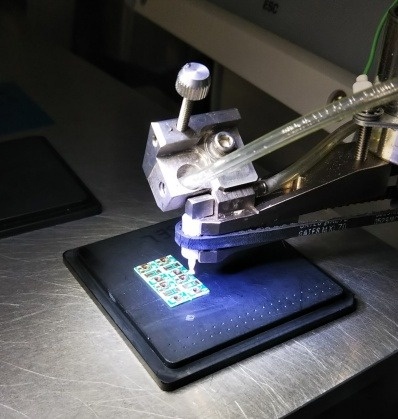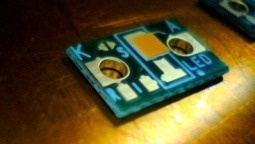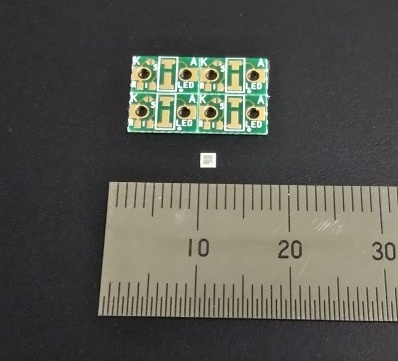Laminating AR film to an acrylic board
It is “R” of sales technology.
As a countermeasure against the new coronavirus, we can see acrylic plates and transparent film curtains here and there.
Physical partitions are the best way to prevent splashes, but in the hospitality industry, it is desirable to eliminate visual obstacles as much as possible in order to get closer to the customer.
So, as an introduction to our laminating technology, I made a sample of a low-reflection film (AR film) bonded to an acrylic plate.
First of all, from the state without AR film.

The view of the front (your side) is reflected on the acrylic board, and the visibility is not good.
We laminate an AR film on it.
Reflection on the acrylic plate occurs on the front and back of the acrylic plate (air / acrylic interface, acrylic / air interface). For this reason, AR film is laminated on the front and back of the acrylic plate.
Then, it was confirmed that the reflection was almost eliminated.

If you look closely, the reflections are not zero, they look faint, and you can see some coloring.
In addition to the reception booth, why not laminate a low-reflection film on the display case to prevent reflection?
However, "low-reflection acrylic plates" with anti-reflection coating directly applied to the acrylic plates are commercially available. In terms of cost and finish, we recommend that you consider partitions and cases that directly use low-reflection acrylic plates.

At our company, we process the film to be laminated to various parts, not limited to displays.
In addition to the AR film introduced this time, we have a track record of handling films with various functionality.
In addition to flat surfaces, we also laminate to curved parts such as curved plates.
We accept orders from one prototype, so please feel free to contact us.







